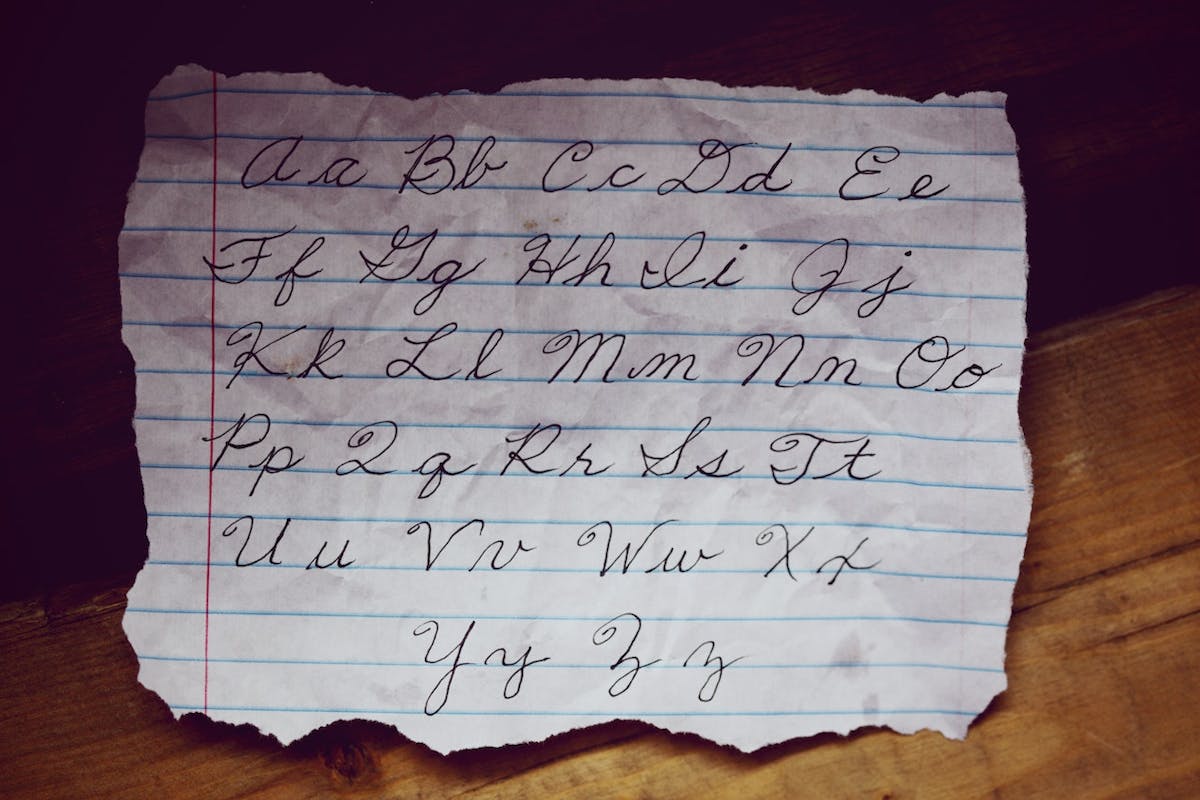A Tale of Two States: California Adds Cursive Instruction as Oregon Hands to Graduates Degrees They Are Unable To Read
Until 2029 high school students in the Beaver State will be spared having to prove basic mastery of reading, writing, or math to graduate.

Starting in January, California’s new law, signed last week by Governor Newsom, will see to it that students in first through sixth grade are instructed in cursive. The style has been used for centuries but is disappearing from curricula in favor of topics deemed more valuable in our digital world.
Oregon is extending its pause on basic reading and writing graduation requirements as neighboring California adds a mandate for lessons in cursive as well as print. The disparity means some youths will be able to read everything from old family letters to the Constitution while others struggle to fulfill their potential.
The National Education Association dubbed the two sides of the debate “Team Keyboard” and “Team Cursive.” California joined the former by ending the state cursive requirement in 2010 but is now back on board with the 21 other states that teach it.
In 1955, “Why Johnny Can’t Read and What You Can Do About It” was a best-selling book. Americans recognized that — as the name of the nation’s oldest non-profit children’s literacy organization states — Reading Is Fundamental and the gateway to learning everything else.
A member of California’s Assembly, Sharon Quirk-Silva, introduced the bill in February. An elementary school teacher for more than 30 years, she saw that although cursive writing was part of the state educational standard, instruction was uneven across districts.
Ms. Quirk-Silva’s concern was that young adults who didn’t learn cursive would be unable to sign their names or read important documents. In a July tweet, she urged followers to “embrace the beauty of cursive,” saying it fosters “connections with handwritten letters, family recipes, and personal journals.”
Illustrating the goal to “preserve our shared human experiences,” Ms. Quirk-Silva included a photograph of a note written in print and cursive. “Kids who can’t read cursive handwriting,” it said, “can’t read historic documents.”
Americans trained in cursive take for granted being inspired by the words emblazoned at the top of the Declaration of Independence or Bill of Rights. Without that ability, a visit to the National Archives loses its power, the founding documents enshrined there reduced to hieroglyphics.
For Oregon’s students, however, even basic text — a prescription bottle, instructions, or bus schedule — may be just as unintelligible. The state Board of Education unanimously decreed on Thursday that until 2029 high school students won’t have to prove basic mastery of reading, writing, or math to graduate.
Oregon jettisoned those requirements in 2020 during the Covid-19 pandemic, alleging a particular burden on “students of color, students learning English as a second language, and students with disabilities” according to the Oregonian.
The stance that expecting basic literacy harms non-white students is an odd one. America’s slave states knew the impact of teaching the first two of the “Three R’s,” which is why after Nat Turner’s 1831 slave revolt, all but three outlawed teaching enslaved persons to read and write.
“The alphabet is an abolitionist,” Harper’s Weekly wrote after Turner’s uprising. “If you would keep a people enslaved, refuse to teach them to read.” After Emancipation, former Confederates again sought to keep African Americans uneducated, disenfranchising them with literacy tests.
The directions the two states — Oregon and California _ are sending education recalls testimony during the 2013 trial of George Zimmerman in the death of teen Trayvon Martin. Under cross-examination, Martin’s friend, Rachel Jeantel, was shown a letter she had composed about events the night of his death.
While Ms. Jeantel had contributed the words, it was written by a friend in cursive. Confronted with the document on the witness stand, she said, “I don’t read cursive.” Her “humiliating admission,” UPI wrote, “sent a shocked hush through the courtroom.”
Mr. Zimmerman was acquitted, suggesting that the defense achieved its goal of undermining Ms. Jeantel’s credibility. That she couldn’t read cursive played a small role. After such an ordeal, though, it’s easy to imagine that she’s haunted by that moment.
The ability to read and write is essential to unlocking the opportunities of liberty enshrined in America’s founding documents. California has taken a step to teach those skills in both print and cursive, while Oregon sees virtue in graduating Johnnys and Janes who can’t read at all.

